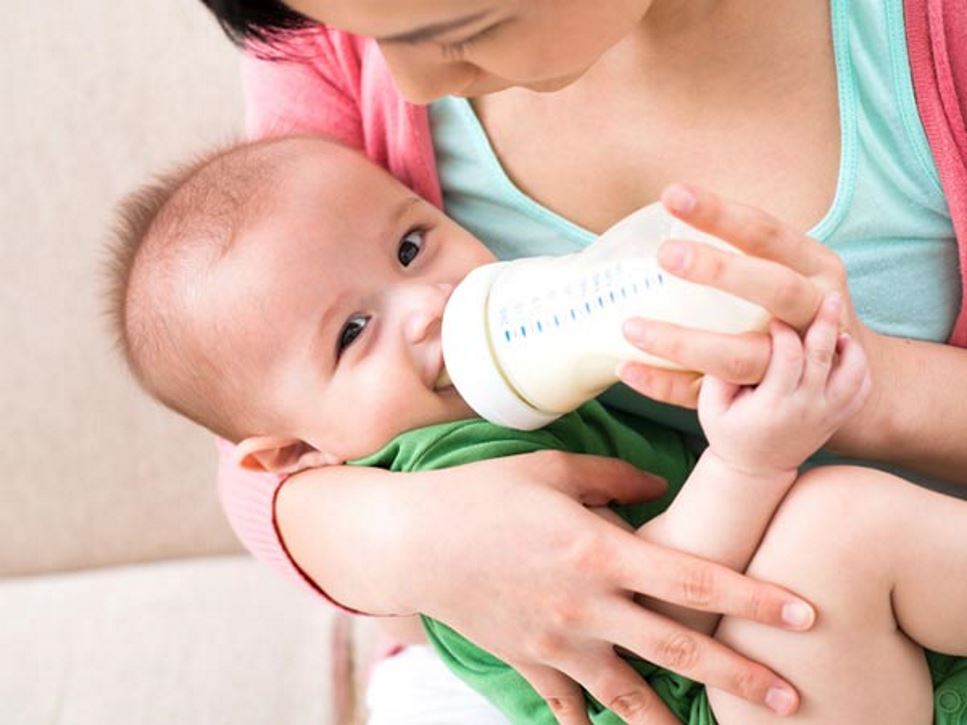Breastfeeding offers many benefits to both mom and baby and is recommended as the sole source of nutrition for infants until complementary foods are introduced around 6 months. However, there are a variety of reasons formula may be given instead. With various formulas available for purchase, it can be difficult to know where to start.
Choosing the Right Formula
There are different types and forms of infant formula; your baby's doctor or clinic can help you choose the right one. The most common formulas are made from specially treated cow's milk and fortified with iron.
Regular cow's milk should never be given to children younger than 1 year. Babies cannot digest milk protein properly and it doesn't contain the right amounts of iron or vitamin C for growing infants.
Depending on your infant’s needs, your health care provider may recommend a soy formula or other specialized formulas, such as those for premature babies. Discuss any feeding changes with your doctor or a registered dietitian nutritionist. Formulas come in ready-to-use, concentrate and powder forms. Powder is the least expensive. Concentrated liquids and powdered formulas need to be mixed with water according to the package directions. Read the label and follow all mixing instructions carefully.
Baby Bottle Safety
Here are the best ways to help keep your baby from getting sick and promote good dental health while bottle feeding:
- Keep Formula Clean.
Wash your hands before mixing formula or feeding. Clean bottles with warm, soapy water. Some bottles can be cleaned in the dishwasher — check to make sure your bottles are dishwasher safe, first. If not using a dishwasher, sterilize bottles daily. This is particularly important for babies born prematurely, younger than 2 months old or who have compromised immune systems. Formula can be prepared in advance and stored in the refrigerator for up to 24 hours after mixing or at room temperature for two hours. Once a feeding begins, use formula within one hour. Do not save leftover formula after a feeding has begun. - Warm Formula Carefully.
If warming formula prior to feeding, run the bottle under warm running water or place in a bowl of warm water for a few minutes. Never heat bottles in the microwave or on top of the stove. Test the temperature of the formula by shaking a few drops onto your inner wrist and use immediately. - Use Only Formula in Bottles.
Never put anything in a baby's bottle except formula or pumped breast milk. This includes cereal, juice, water, cow’s milk or dairy-free milk alternatives and sweetened drinks such as soda. Breastmilk and formula are the only beverages recommended during the first 6 months of life. Small amounts of water may be introduced around 6 months when complementary foods are introduced and should be given in a cup.
Other Considerations
Whether breastfeeding or bottle-feeding, babies do best with cuddling and love at meal times. Sit in a quiet, comfortable place and relax. Hold your baby in a semi-upright position and talk softly while feeding.
Every baby has a different feeding rhythm and it takes some babies a while to settle into a regular routine. During this time, try feeding “on demand” when he or she seems hungry. Allow your baby to decide when to stop eating. Toward the end of a feeding, your baby may fall into a light sleep or naturally turn away from the bottle. If this happens, remove the bottle. Never try to force a baby to finish a bottle.
Gently burp your baby midway and at the end of feeding. Burping removes uncomfortable air from your baby's tummy; you can burp your baby over your shoulder or knee. Spitting up small amounts of formula is normal during feeding or burping.
References
Find a Nutrition Expert
Looking for credible nutrition information and recommendations? The Academy of Nutrition and Dietetics' network of credentialed food and nutrition practitioners are ready to help!


